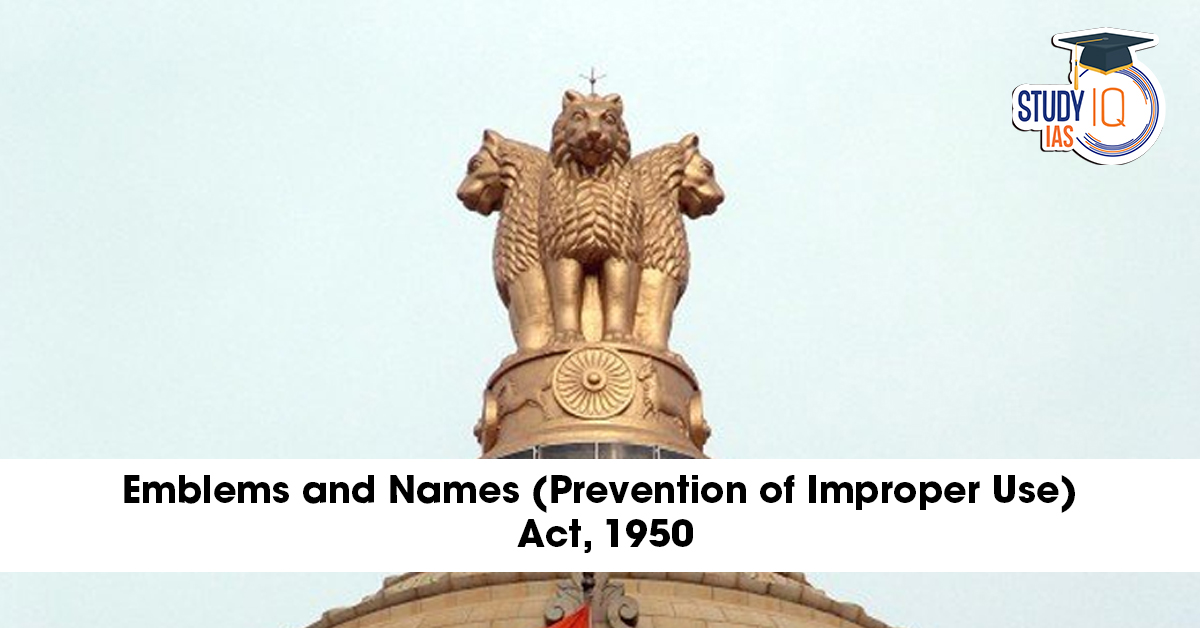Context: SC rejects plea to include Savarkar’s name in Emblems Act.
Key Features of the Emblems and Names (Prevention of Improper Use) Act, 1950
- Purpose: Prevents unauthorized commercial or personal use of certain national emblems, names, and symbols to safeguard their dignity.
- Prohibited Uses (Section 3):
- Restricts the use of names, emblems, or official seals of the Government of India, UN, WHO, etc., without permission.
- Bars misuse of names like “Mahatma Gandhi”, “Jawaharlal Nehru”, or any other name specified by the central government.
- Legal Penalty: Violations can lead to fines (upto Rs.500) or imprisonment.
- The Previous Sanctions for Prosecution: No legal action for any offence punishable under this Act can be initiated without prior approval from the Central Government or an authorised officer designated by the Central Government through a general or specific order.
- Power to Amend the Schedule: The Central Government has the authority to modify or expand the Schedule by issuing a notification in the Official Gazette.
| Naveen Jindal vs Union of India (2004) |
| SC Ruling: Held that flying the National Flag is a Fundamental Right under Article 19(1)(a) (freedom of expression).
Regulating Laws:
|


 SLAPP Suits: Meaning, Examples, Impact o...
SLAPP Suits: Meaning, Examples, Impact o...
 Finance Commission of India, Articles an...
Finance Commission of India, Articles an...
 High Number of Pending Cases in Supreme ...
High Number of Pending Cases in Supreme ...

























